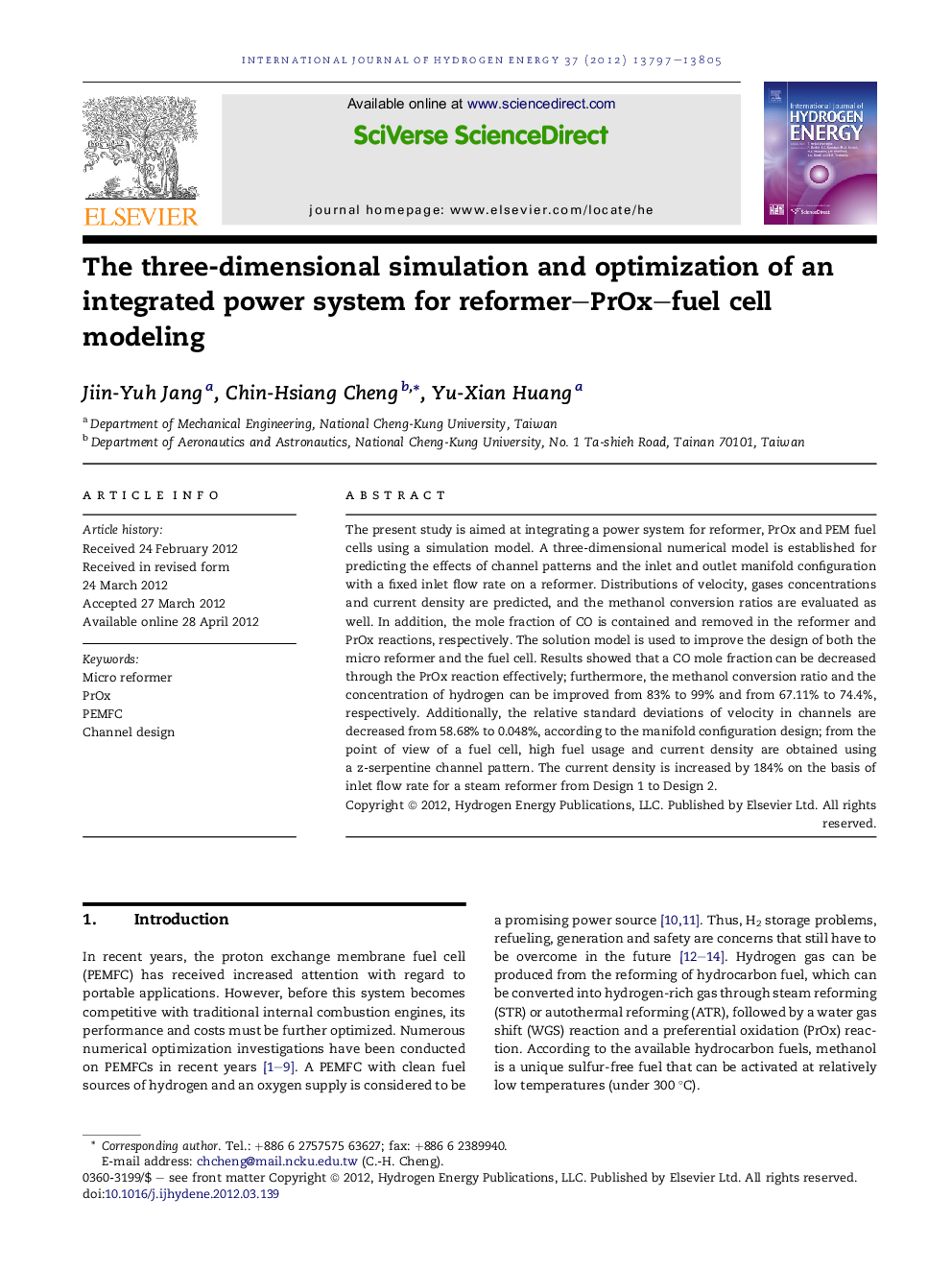| Article ID | Journal | Published Year | Pages | File Type |
|---|---|---|---|---|
| 1282286 | International Journal of Hydrogen Energy | 2012 | 9 Pages |
The present study is aimed at integrating a power system for reformer, PrOx and PEM fuel cells using a simulation model. A three-dimensional numerical model is established for predicting the effects of channel patterns and the inlet and outlet manifold configuration with a fixed inlet flow rate on a reformer. Distributions of velocity, gases concentrations and current density are predicted, and the methanol conversion ratios are evaluated as well. In addition, the mole fraction of CO is contained and removed in the reformer and PrOx reactions, respectively. The solution model is used to improve the design of both the micro reformer and the fuel cell. Results showed that a CO mole fraction can be decreased through the PrOx reaction effectively; furthermore, the methanol conversion ratio and the concentration of hydrogen can be improved from 83% to 99% and from 67.11% to 74.4%, respectively. Additionally, the relative standard deviations of velocity in channels are decreased from 58.68% to 0.048%, according to the manifold configuration design; from the point of view of a fuel cell, high fuel usage and current density are obtained using a z-serpentine channel pattern. The current density is increased by 184% on the basis of inlet flow rate for a steam reformer from Design 1 to Design 2.
► The small-scale power system has received increased attention in the future. ► The efficiency of power system is affected by various channel patterns design. ► The H2 concentration is increased by configuration of central inlet/two outlets. ► The CO concentration is decreased continuously from upstream to downstream. ► The current density was improved 184% by z-serpentine channel pattern.
